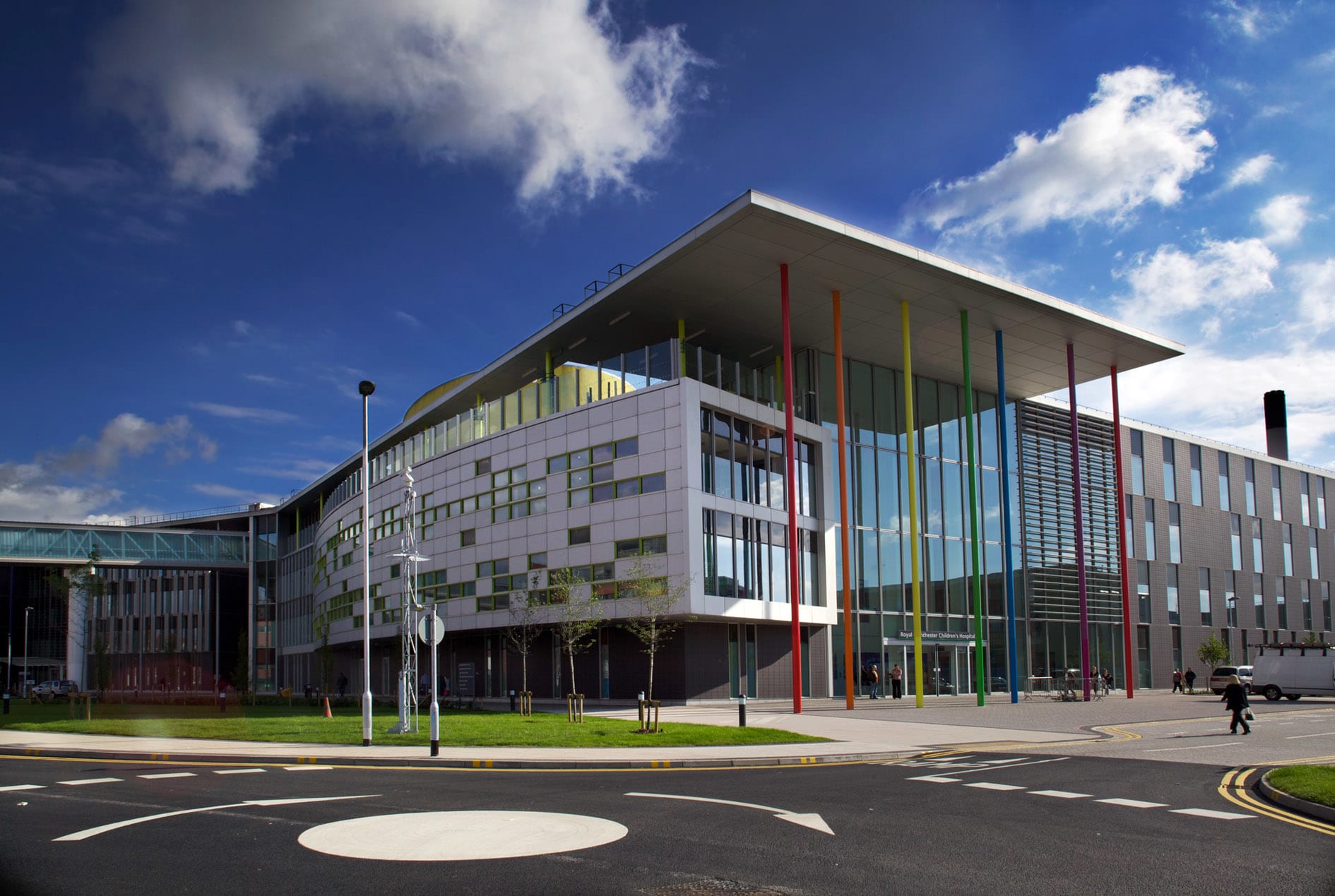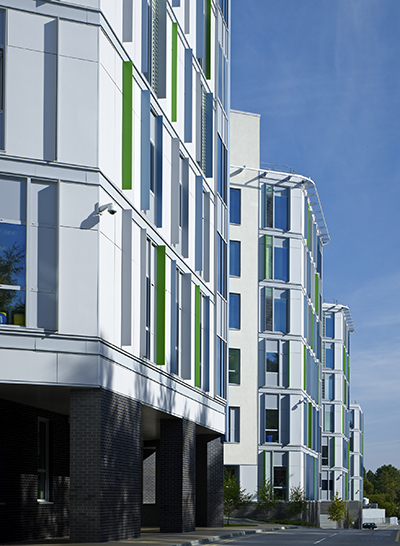Burkhard Musselman, healthcare architecture specialist and managing principal at the UK office of global architecture firm Stantec, discusses the game-changing role of BIM software in ensuring future PPP hospital projects are designed for purpose, built to last and focused on operational cost efficiency.

What the public sector has learned is that more accountability needs to be embedded in every element of the project at every phase in the contract cycle. The way to achieve that is not just through better due diligence and risk management, but by delivering PPP hospital projects in BIM.– Burkhard Musselman, Stantec
PPP (Private-Public Partnership), or PFI (Private Finance Initiative) as it used to be commonly known, was a great idea for injecting private sector cash into public sector development projects. In the UK, it meant that long-planned hospitals could finally be built and, with patients receiving treatment in shiny new facilities, health authorities gaining modern, fit-for-purpose assets and private sector companies tapping into a long-term investment opportunity. It seemed that everyone was a winner.
Fast forward 20 years, as we examine the legacy of the boom in privately-funded public sector buildings, the real story is much more complex, with a far from happy ending. The reality is that, due to a desire to build the assets as cost-effectively as possible and a lack of due diligence in capping the operational costs over the contract period, many of the hospitals that were built during the peak of PFI are now difficult and expensive to maintain.
It’s one of the many lessons that have been learned from the first wave of PFI which are now being incorporated into the funding, design and management models for a new tranche of PPP schemes.
But it’s not just our understanding of the potential pitfalls of private/public development models that has evolved: technology has advanced too and it’s clear that the 3D modelling processes inherent in BIM methodology will be a factor in positive change for the next generation of PPP.
Evidence and accountability
As a specialist in architecture for the healthcare sector, I understand the importance of engaging with stakeholders across managerial, clinical, patient and community groups to understand what a new facility needs to be and design it around the people who will use it. While I’m certain that the architects responsible for some of the more operationally expensive PFI projects worked to the same philosophy, their designs were taken forward by a private sector design & build contractor.
During the value engineering “design development” phase there was undoubtedly a focus on reducing build costs. This may have reduced the private sector partner’s exposure to financial risk but the outcome has most often been use of inadequate systems and materials which have increased the operational and maintenance costs during the long concession period.
What the public sector has learned from this is that more accountability needs to be embedded in every element of the project at every phase in the contract cycle. That means accountability for both build and operational costs; for quality of specification, build and facilities management; for servicing and replacement intervals; and for ease of any refurbishment or remodelling projects, which are always inevitable in a healthcare setting.
The way to achieve all of that is not just through better due diligence and risk management, but by delivering PPP hospital projects in BIM with all the information required for the operational phase of the contract embedded in the model for the asset from the outset.
Effective collaboration
Using a BIM modelling process to design a PPP hospital means that there can be much more effective collaboration between the delivery partners. These include: the design and build funding partner; the NHS Trust which may part-fund the build and will certainly carry the cost of the operational phase; the hard and soft FM providers who will manage the assets; and the clinical and patient groups who will use it.
The detail of the specification in the model not only delivers the well-documented advantages of 3D BIM modelling, such as cost certainty, reduced procurement waste and early clash detection, but also allows informed decision-making and improved accountability for the specification.

Central Manchester Hospitals and Research Centre: Using a BIM modelling process to design a PPP hospital means that there can be much more effective collaboration between the delivery partners
One of the learning points from first generation PFI schemes is the essential role of the FM provider throughout the design phase. Whereas, on those projects, the FM provider might not even have be appointed until the build was well underway, with no opportunity to influence the specification, bringing them in early and involving them in developing the BIM model means that they can advise on the operational cost and efficiency implications of specification choices.
The real difference that BIM brings to the table is the evidence base for specification choices. With every element of the specification considered as a build cost versus a whole-life cost, more informed decisions can be made when deciding whether to choose a more expensive approach that will offer longer service intervals, lower maintenance, reduced energy consumption or a longer design life.
This does not necessarily mean that the whole focus will be switched to operational cost rather than build cost – these assets still need to be built at a cost that is viable for the private sector investor – but it does mean that there is a considered knowledge-led process that can be strategically linked to the priorities of all stakeholders.
Longer term, the information in the model can also be used to ensure that all maintenance, refurbishment and remodelling work is done as cost-effectively and efficiently as possible. One of the issues with PFI schemes in the past has been a lack of legacy information, leading to mistakes and onerous information gathering during the operational phase.

A BIM model is the building’s manual
By designing and building these projects in BIM, we can now ensure that the model is also a manual for the building, helping to strip out potential for errors and layers of management time.
Design advantages
The accuracy and detail inherent in a BIM model is also a significant advantage for the new wave of PPP hospital development projects. Design periods can be reduced by working collaboratively to design the detail of a space with stakeholders – such as a patient room for example – and then replicating this as a standard model on every floor.
We are already using BIM technology in combination with VR capabilities to help stakeholders input into the detailed design process in a much more active way than they have in the past, and experience the hospital environment almost as it will be when built.
Once all the detail of the specification is in the model, it becomes a pliable template that can be reproduced or modified to suit changing needs. We may even see a day where there is a standard BIM model for various elements of a hospital for use in an NHS-wide portfolio of standardised hospital elements, reducing the design phase and the associated costs.
And, of course, we can also use other modelling technologies, such as computational fluid dynamics (CFD) and climate modelling to inform layout, circulation and orientation of the building in a way that is more operationally, cost and energy efficient.
For example, by combining climate modelling and BIM we can not only determine how to orient the building and where to locate the brises soleil, but we can also calculate the likely heating and cooling demand to inform the decision-making process on specification of the plant. We can even determine the optimum location for this plant in terms of both spatial layout and efficiency.
In this way, digital modelling can be used to offer predictability of operational costs and an evidence-based business case for capital expenditure decision-making during the specification process.
Cost and quality management
Regardless of what has been learned about improved management of PPP funding models from both the UK and other markets, this valuable approach to delivering hospital buildings is only viable if cost and quality management are embedded in the design process from both a build and operational phase perspective. BIM offers this capability in terms of both its collaborative process and its digital technology.











